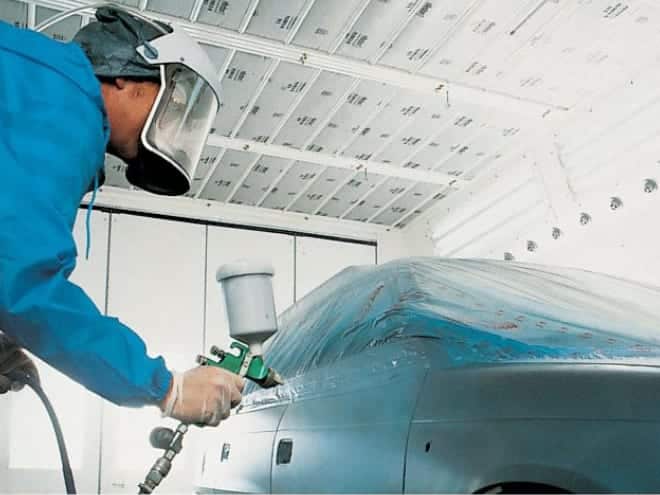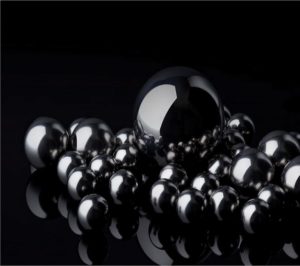By Cynthia Challener, CoatingsTech Contributing Writer
When first introduced, smart coatings were considered novelties with little likelihood of commercialization in the near term. That has not proven to be the case. Just a decade later, several types of smart coatings find use on a daily basis in automotive, construction, consumer electronics, and other applications. Advances in technology continue as well, and while there still remain many smart coatings that may be unsuitable for practical use, equally as many are being introduced that have the potential to significantly impact industrial and consumer markets.
When Are Coatings ‘Smart’?
Because there is no one universal definition of smart coatings, the size of the smart coatings market is difficult to assess. As a result, the numbers reported by different market research firms can vary dramatically based on the types of coatings included in their studies. For instance, Grandview Research estimates that the global smart coatings market, including self-healing, self-cleaning, self-stratifying/assembling, and similar coating technologies, was worth $885.5 million in 2015. Transparency Market Research predicts the value of the global smart coatings market will reach approximately $1 billion by 2024. This firm defines smart coatings as films or layers made up of coating materials that have pre-defined characteristics and display certain properties upon reacting to external stimuli such as light, pressure, or electric current and includes anticorrosion, self-dimming, self-cleaning, self-healing, biomedical, and other coatings. Both of these numbers are much smaller than that reported by n-tech Research, which predicts the global smart coatings market will be worth $8.1 billion by 2021. This firm has a much broader definition of smart coatings—their estimate covers electrochromic, hydrophilic, hydrophobic and omniphobic, microencapsulation and vascular self-healing, multifunctional, other self-dimming and color shifting, photovoltaic, and piezoelectric and piezo-magnetic coatings, as well as smart anticorrosion/antifouling, antimicrobial and antifungal coatings, and self-healing polymer foams and hydrogels.
“While some uncertainty remains regarding what should or should not be classified as smart coatings, there definitely is agreement that coatings need to provide added functionality beyond the fundamental performance requirements of beautification and basic protection,” states Jamil Baghdachi, a professor at Eastern Michigan University and organizer and chairman of the annual Smart Coatings Conference held in February in Orlando, FL. “The speed of change and innovation in the smart coatings fields has been phenomenal over the last 10 years, and this rate of development will only continue to accelerate,” he asserts. “New technologies and approaches are being introduced continually. Of course, some of them do not have commercial applicability, but they have interesting properties and raise provocative questions that drive further development of technologies that will eventually be commercial. It is a very exciting field with the potential to have significant impacts on the industry and society,” Baghdachi adds.
Advances in Smart Technologies
Indeed, smart coatings are seen as having the ability to address key unmet needs and gaps in a number of different sectors, according to Avinash Bhaskar, BASF’s Transportation Coatings segment manager for Dispersions, Resins & Additives in North America. “Smart coatings help to improve people’s lives,” asserts Songwei Lu, group leader, Display Coatings and senior research associate, Industrial Coatings at PPG. “Transparent, functional, easy-to-clean, antifingerprint, and antiglare coatings for touch-screen displays; superhydrophobic, easy-to-clean coatings for sensor and camera cover lenses for autonomous vehicles; de-icing coatings for airplane windshields; and solar-heat-management coatings for aircraft, for instance, are attractive solutions because they ensure people’s safety and comfort while also meeting the needs of society for energy savings and environmental compatibility,” he comments.
A major trend driving the development of smart coating technologies is the continuous demand for higher performance to extend product lifetimes and reduce maintenance, to enhance energy efficiency both for cost and environmental reasons, and to cope with the change in substrates toward new and lightweight materials like composites and aluminum, according to Angela Smits, technology development manager with Croda. She adds that health and environmental or related regulatory limitations to some additives and chemistries combined with progress in polymer chemistry and technology are also fueling advances in smart coatings technology.
At AkzoNobel, functional coatings are coatings designed to have specific inherent characteristics (e.g., low-adhesion surfaces, wate r repellency, ice phobicity, etc.), but smart coatings are distinct from functional coatings in that they exhibit stimuli-responsive behavior, responding to environmental or other external stimuli and changing their properties to provide a performance benefit, according to Paul Jackson, technology manager with AkzoNobel Performance Coatings Research. Over the years, smart coatings have been tacitly defined as the most functional of functional coatings, agrees Oleg Figovsky, director of R&D for INRC Polymate (Israel), Green Coating, Inc., and Nanotech Industries, Inc. (USA). He adds, though, that the functionality of coatings and other materials has changed, and a coating that might have been thought of as smart in the past may not be considered as such now. “Over time, one generation of smart coatings becomes merely functional, and a new generation of coatings takes over in the smart coatings category.”
r repellency, ice phobicity, etc.), but smart coatings are distinct from functional coatings in that they exhibit stimuli-responsive behavior, responding to environmental or other external stimuli and changing their properties to provide a performance benefit, according to Paul Jackson, technology manager with AkzoNobel Performance Coatings Research. Over the years, smart coatings have been tacitly defined as the most functional of functional coatings, agrees Oleg Figovsky, director of R&D for INRC Polymate (Israel), Green Coating, Inc., and Nanotech Industries, Inc. (USA). He adds, though, that the functionality of coatings and other materials has changed, and a coating that might have been thought of as smart in the past may not be considered as such now. “Over time, one generation of smart coatings becomes merely functional, and a new generation of coatings takes over in the smart coatings category.”
In addition to generating dozens of R&D projects all over the world and several conferences, Figovsky believes that in the future, smart coatings will create protectable intellectual property (IP), avoid commoditization of coatings products, and lead to a stream of new products over a sustained period of time. “The trend toward a better IP environment will attract new attention for smart coatings businesses from venture and angel capitalists. All of these trends suggest that smart coatings (and smart materials more generally) will be a substantial business opportunity going forward. We expect to see large firms make substantial investments in this area; some have already. These firms will include not just coatings companies, but also the large glass firms and other companies higher up the supply chain,” he observes.
Applications for Smart Coatings
There is particular interest in smart coatings in the aerospace and automotive industries. For both applications, increased ease of maintenance with self-cleaning/hydrophobic/hydrophilic coatings is attractive, according to Bhaskar. He also notes that smart coatings that provide protection from external environmental factors that may affect performance, such as anti-icing coatings, are of interest for aircraft, while improved durability and aesthetics through the use of self-healing coatings that can tackle micro-scratches on vehicle bodies and interior surfaces is attracting attention to smart technologies for automobiles. Sabrina Peczonczyk, research scientist with Ford Motor Company, USA points to the increasing amount of electronic technology being incorporated into vehicles as an important driver of smart coatings use in the automotive sector. “The performance of displays, cameras, and sensors both inside and outside of the vehicle, and thus the user experience, can be augmented by smart coatings that have easy-to-clean and/or self-healing properties,” she observes. The trend toward multi-passenger and ride-share vehicles is also driving the development of coatings with antimicrobial properties for vehicle interiors, while the continual push to improve fuel efficiency is encouraging the development of new anticorrosion coatings for mixed materials, according to Peczonczyk.
Smart coatings are designed to remain passive unless prompted to perform a function based on the stimuli, and to be able to repeat the process up to thousands of cycles or more, and spanning over several years. Figovsky notes that they can improve a system’s efficiency by reducing inspection times, maintenance costs, and equipment downtime. They can also reduce the need for repairing corroded areas in addition to extending the life of components and structures made from corrosive materials. Other advantages include their ability to detect and prevent corrosion, on-demand delivery of corrosion inhibitors, and being environmentally friendly. As a result, they are increasingly used in a variety of applications in the medical, military, textile, transport, construction, electronics, and other industries for protection against corrosion and abrasion, as well as other surface protection purposes.
Smart coatings can be found to some extent in self-cleaning façade panels and in touchscreens and displays, according to Smits, where they provid e an obvious performance benefit. She notes that while high-shear requirements for anti-icing coatings are still limited, antimicrobial and particularly antifouling coatings have been adopted. “Additional alternative smart and environmentally friendly solutions are also being developed in which the effect is built into the polymer chemistry or morphology. First adoption is related to the technical advancement, the cost of the solution versus the savings benefit, and the openness of the market to change or willingness to pay for novelties,” Smits comments.
e an obvious performance benefit. She notes that while high-shear requirements for anti-icing coatings are still limited, antimicrobial and particularly antifouling coatings have been adopted. “Additional alternative smart and environmentally friendly solutions are also being developed in which the effect is built into the polymer chemistry or morphology. First adoption is related to the technical advancement, the cost of the solution versus the savings benefit, and the openness of the market to change or willingness to pay for novelties,” Smits comments.
PPG’s industrial coatings business unit has commercialized easy-to-clean, antiglare, antireflective, and antifingerprint coatings for display applications, according to Lu. “These technologies have been rapidly adopted in recent years due to the surging popularity of smartphones, tablets, and other touch-screen displays, such as touchscreen laptops,” he says. The transparent functional coatings are applied via a spray process and create easy-to-clean surfaces with a silky feel that offer better readability under direct light combined with increased scratch resistance, according to Lu. Fingerprints can be cleared easily from surfaces treated with easy-to-clean coatings, while antifingerprint coatings provide a fingerprint-hiding effect. PPG has also commercialized SurfaceSeal™ hydrophobic coatings that help keep airplane windshields clear in wet conditions, reducing aircraft weight and increasing fuel efficiency by eliminating the need for windshield wipers. Encapsulation technologies have also been developed that enable the timely release of active substances, such as corrosion inhibitors, in response to certain external environmental conditions, such as pH changes or metal ion release associated with corrosion processes, that can help with improving the performance of the coatings, according to Bhaskar.
Easy-to-clean and antifingerprint coatings for internal touchscreen displays were the first type of smart coatings to be implemented commercially in automobiles, according to Peczonczyk. “These technologies were the first to be adopted because the durability requirements for inside of the vehicle are less severe than coatings that are adhered to the outside of the vehicle,” she explains. In fact, hydrophobic and antifingerprint coatings are widely used for touch screens in consumer electronic devices. The latter coatings often release surfactants or enzymes in response to surface contact and act to fade the deposited fingerprints. “Coatings that are easy to clean, self-cleaning, or resistant to the accumulation of dirt, water droplets, frost, or salt have much potential to be commercialized as protective coatings for cameras or sensors. These coatings would need to be transparent, have good adhesion to the underlying substrate (glass or polycarbonate), and be durable under a wide variety of environmental conditions. This functionality will become critical as autonomous vehicles rely on cameras and sensors for navigation and safety,” Peczonczyk asserts.
Commercial Viability
Self-healing coatings, particularly coatings used to repair minor scratches on automobiles where healing is stimulated by heat from the sun, are commercial today, as are self-cleaning coatings based on photocatalytic TiO2 or ZnO technology. Jackson also points to photochromic/thermochromic/electrochromic coatings applied to transparent glass or plastics that change color and spectral transmission characteristics in response to appropriate stimuli. Antimicrobial silver-ion-containing coatings release silver ions through ion exchange with the cell walls of microbial contaminants. AkzoNobel, for instance, has successfully developed self-healing vehicle refinish coatings, smart antifingerprint coatings, and antimicrobial coatings.
In the medium to longer term, Jackson can envisage other types of smart coatings progressing to commercial applications, including coating surfaces that undergo reversible rearrangement in response to specific stimuli (pH, temperature, humidity, surface contact, etc.), with the polymer rearrangement significantly changing the surface properties. As an example, he describes a coating that switches between hydrophobic and hydrophilic surface characteristics. “This type of approach has been widely discussed and indeed demonstrated experimentally; however, to date, commercialization in coating markets has been limited,” he notes. Coatings containing sensor technologies that monitor the condition of the coating and/or substrates, particularly with regard to corrosion protection and mechanical integrity, are also likely to be on the market in the future, according to Jackson. “Providing real-time coating information to asset owners and coating companies could allow more efficient maintenance of large and/or remote structures with the potential benefit of both reducing overall maintenance costs and extending the lifetimes of the assets,” he observes.
Smits believes that in the longer term, self-healing coatings will find applications in consumer electronics. Croda, for instance, is developing intrinsically self-healing technology that allows ambient healing while providing mechanical performance better than that observed with existing technologies. The new polymer building blocks make polymers intrinsically self-healing by closing scratches and re-combining cuts while recovering the polymer strength through hydrogen-bonding and polymer alignment or entanglement. The company already offers antimicrobial technology that is built into the coating surface, acting by physical interaction with microbes, which leads to cell disruption.
“Several developments are taking place at the academic level, but we see increasing R&D efforts in industry. There is clear market and consumer interest in several smart coating technologies. “As with all technology at an early stage, however, market adoption and technology improvement should come hand-in-hand to develop the market,” comments Smits. Hurdles to achieving this goal include the novelty of the technology combined with new market development.
BASF’s Colors and Effects division offers IR-reflective pigments for use in heat management coatings. In particular, the company offers innovative black pigments that can help reduce the heating effect in sunlight through reflection or transmission of near-infrared radiation with very low levels of absorption. The optical impression of blackness is preserved, but the “total solar reflectance” (TSR) is increased from < 5% for carbon black to > 30%. “In practical terms, this improved TSR performance can result in a temperature decrease of up to 20°C on the surface, which not only provides benefits from a comfort perspective, but also results in reduced demand from the material itself,” says Bhaskar.
Meanwhile, Ford Motor Company is interested in smart or functional coatings for camera lenses or light detection and ranging (LiDAR) sensor windows as an enabling technology for autonomous vehicles. “Autonomous vehicles rely on a suite of cameras and LiDAR sensors to map and sense the surrounding environment when operating in autonomous mode. Accumulation of dirt, water droplets, frost, or salt can negatively impact the reliability of these cameras and sensors. Functional coatings that can either prevent the buildup of dirt, frost, or water droplets or can exhibit self-cleaning properties may increase the reliability of the cameras and sensors,” Peczonczyk says. There is also an interest in antimicrobial coatings for interior parts and seating materials for future ride-share vehicles.
‘Smart’ Research
Baghdachi has been involved in the smart coatings field since its emergence. His research group has developed several coating technologies that have attracted interest from the industry. Self-stratifying coatings, while not stimuli-responsive, are a smart way to produce coating systems, according to Baghdachi. Unlike other self-stratifying solutions that work through phase separation, his technology is based on kinetically driven separation. As the applied coating passes through the first, lower-temperature zone of a curing oven, the reaction with a lower activation temperature proceeds, and as the resin is formed it precipitates and settles on the surface due to its higher density. The second reaction with a higher activation energy then occurs in the higher-temperature zone of the oven. By designing the first polymer so that unreacted groups remain after its deposition, the two layers then react with one another, ensuring that the “primer” and “topcoat” are physically bound to one another. The system can also be designed such that the topcoat has a low surface energy, according to Baghdachi. The technology has been used for epoxies, urethanes, acrylic melamine, phenolic, and silicone-based coatings and has been commercialized on a small scale. “We have taken the first step in the right direction. Hopefully these initial successes will encourage industry to further pursue this type of process,” he states.
Encapsulation to enable controlled and timed release of coating ingredients has also been a focus of the Baghdachi group. Catalysts, photoinitiators, corrosion inhibitors, and raw materials for self-healing coatings have all been encapsulated. Traditional blocked catalysts require high temperatures (120–150°C) for their release. By encapsulating unblocked catalysts in a thermoplastic, polymeric matrix that melts at lower temperatures (60–75°C), it is possible to achieve effective cure with significantly reduced energy consumption. In one example, the group developed acrylic melamine coatings that cure at 75°C rather than 130°C. Encapsulation of photoinitiators and corrosion inhibitors prevents these important ingredients from degrading or being washed away before they are needed. Designing the capsules to open up under basic or acidic conditions that are present as the coating ages and suffers from degradation or corrosion allows for appropriately timed release of the reactive agents, according to Baghdachi. He is working with Landec, which produces Intellimer Polymers® with tunable melting points, to manufacture capsules of appropriate sizes for different applications (fine for automotive coatings, larger for industrial protective coatings).
Challenges Ahead
The biggest challenge that Bhaskar sees for the adoption of additional smart coatings technologies is the economics involved with their development and eventual mass adoption in various markets. “At the onset, smart coatings technologies may be cost-prohibitive for several applications, which may lead to slower adoption in the marketplace,” he says.
One of the major hurdles to advancing current smart coating technologies for external and internal automotive applications is durability . . .
Translating smart coatings concepts demonstrated in the laboratory and converting them into practical coating systems is another key challenge, according to Jackson. “The fact that smart coatings must provide a wide range of other performance attributes in addition to their smart behavior; the methods of coating application and cure regime currently available in the target market; the environmental, health, and safety regulations pertaining to the targeted end use markets; and cost constraints inevitably place limitations on the suitability of certain concepts,” he explains. “New smart coating technologies must also provide effective performance under ‘real-world’ conditions where the stimuli often cannot be controlled and may vary significantly, and this effective performance must be maintained throughout the coating lifetime,” Jackson adds.
To date, one of the major hurdles to advancing current smart coating technologies for external and internal automotive applications is durability, according to Peczonczyk. External automotive coatings need to withstand a wide range of environmental (UV light, heat, humidity) and physical conditions for extended periods of time. Easy-to-clean and other functional coatings for the vehicle interior are also subject to extreme challenges (abrasion, heat, chemicals, humidity, etc.) for many years. “These hurdles in the automotive industry are at times greater than in other industries due to the long life spans and difficult environmental conditions vehicles are exposed to. In addition, adding functionality to coatings often also adds cost. For most applications, improvements in functionality must be weighed against added cost,” she states.
CoatingsTech | Vol. 14, No. 7 | July 2017

